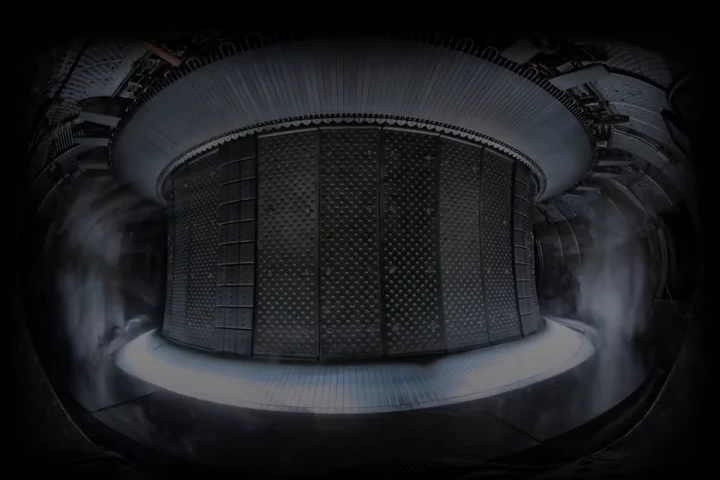Last September, at the World Human Powered Speed Challenge at Battle Mountain in Nevada, a Dutch team made up of students from TU Delft and VU Amsterdam set the current world speed record of 83.13 mph (133.78 km/h) for an unpaced cyclist on flat ground in the VeloX3. The University of Liverpool Velocipede Team (ULVT) has now announced its intentions to take the title with the Arion1 Velocipede, a bicycle resembling an oversized medicine capsule that has been left out in the sun too long.
The Arion1's design isn't that far removed from the VeloX3, with both enclosing the frame, transmission and recumbent rider in an aerodynamic carbon-fiber shell shaped like an inverted teardrop. The ULVT is claiming their design is 40 times more aerodynamic than a Bugatti Veyron, but being pedal-powered it will still fall well short of the 267.8 mph (430.9 km/h) achieved by the Veyron Super Sport (not to mention the 163 mph (263 km/h) speed reached by Francois Gissy on his rocket-powered bicycle). Instead, the team is aiming for a more modest, but no less impressive top speed of 90 mph (144.8 km/h) for its vehicle.
To achieve this speed, the rider, who will be seated just 5 inches (13 cm) from the floor, will need to get their legs pumping to generate over 700 W of power, which the team points out is enough power to light the average UK home. The power will be delivered to the wheels via a transmission system with a gear ratio of 17:1, as compared to the gear ratio of 4:1 found on a standard bicycle.
The ULVT says the Arion1 will weigh less than 55 lb (25 kg) and, despite the blue and white color scheme pictured in the renderings, the final colors for the vehicle are yet to be decided – although tartan, which was suggested by one team member, has apparently been ruled out.

Also yet to be finalized are the parameters of the vehicle, with Ben Hogan, the team leader of the ULVT, telling us the size of the Arion1 will be, "tailored to the rider's exact measurements to allow the most streamlined shape possible." Said rider will also need to carry out an extensive 16-month training program to ensure they are up to the task.
In place of a transparent windscreen, the team is in the process of designing a camera and monitor system that will let the rider see where they are going – an important feature when you're barreling along at 90 mph. Hogan says this monitoring system will not only reduce aerodynamic drag, but allow the rider's head to remain in the optimum riding position.
"To get to the speeds they intend to, the team will have to make sure everything is perfect, from the vehicle’s aerodynamics to the size of its wheels," said Philippa Oldham, Head of Transport at the Institution of Mechanical Engineers, of which all the ULVT are members. "It’s an extremely tough ask to get a human powered vehicle to travel at 90mph – and a leap into the unknown – but with the right engineering approach it is possible."
The ULVT is aiming to have the Arion1 completed in May 2015, ready to take a run at the world speed record at the WHPSC at Battle Mountain in September 2015. The team plans to enter a male and a female rider in the event, looking to claim a new world record for both genders.
Sources: Institution of Mechanical Engineers, ULVT








